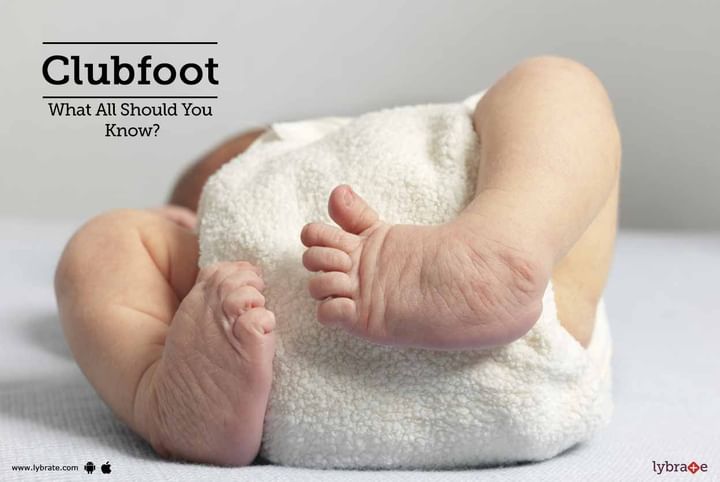Clubfoot - What All Should You Know?
Clubfoot is a birth defect affecting babies and is characterized by deformity of the foot. A baby with clubfoot has his/her foot twisted. It can affect one or both the feet, which point inwards and may even appear upside down. The condition can affect one in 1,000 babies where the baby is normal and healthy otherwise. Depending on the severity of the condition, your baby will experience difficulty in walking or limping.
Causes
The foot or feet appear twisted or crooked due to shorter tissues that connect the muscles to bones. Doctors do not know the exact cause of the tendons and tissues being shorter than the typical length. However, there are certain known factors that increase the risk of clubfoot in babies. They are:
- Family history- A baby is more likely to have a clubfoot if both or one of the parents has clubfoot.
- Congenital conditions- If your baby is born with a medical condition like spina bifida, he/she may have clubfoot as one of the symptoms.
- Lifestyle choices- A person who smokes during pregnancy and has a family history of clubfoot, is at greater risk of giving birth to a baby with clubfoot.
- Less amniotic fluid- Amniotic fluid surrounds the fetus in the womb. Therefore, low level of amniotic fluid may increase the chance of clubfoot in your baby.
The clubfoot does not cause any pain to your baby when he or she is small. However, it will cause difficulties once the child grows up and starts to walk. The condition has been seen to affect more males than females and needs proper treatment.
Treatment-
Your doctor will able to spot and detect clubfoot in your baby during an ultrasound session and will prepare you for the same. Once your baby is born, his or her treatment can begin immediately. The standard treatment for clubfoot is called the Ponseti method. The Ponseti method is divided into stages that include-
- Casting- As babies have tender and soft tendons that can easily bend and be stretched, the doctor manipulates the foot into the correct position and puts a cast on it to keep it in place. This process continues for a few week. After the first few days, the previous cast is removed and the foot is put in a new position and is again put in a cast; this goes on for the next couple of weeks.
- Surgery- When the final casting comes off, a small surgery is performed to loosen the Achilles tendon at the back of the ankle. The procedure is generally performed under local anesthesia.
- Shoe Brace- After a successful surgery, your baby is required to wear a special type of shoe brace that is attached to his/her leg with a bar. This is required for preventing the recurrence of clubfoot. Your baby needs to wear the shoe brace for at least 3 months after surgery and after that, wearing the shoe brace only during nighttime till the age of 4-5 years should suffice.
However, if the Ponseti method does not yield the desired results, major surgery is carried out at the age of 6 months and one year. In clubfoot cases, there is a 20 percent chance of recurrence that needs to be treated again with casting and surgery.
All babies treated with the Ponseti method go on to have a normal childhood and learn to walk and play like other healthy children.



+1.svg)
